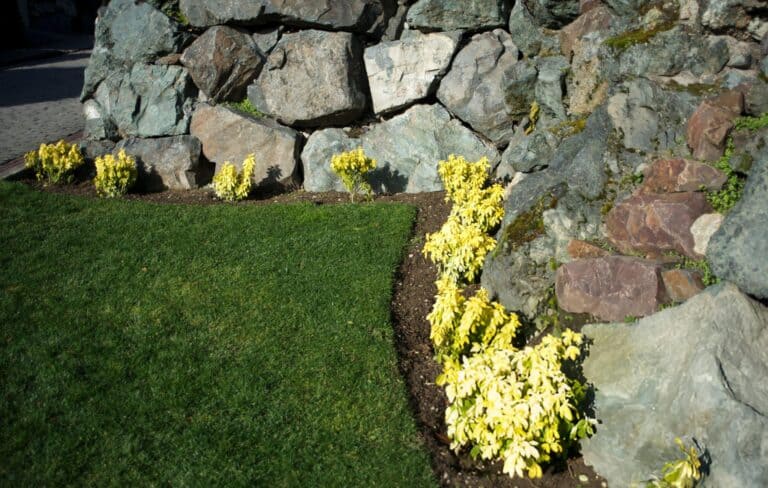Drainage might not be the first thing people think about when planning hardscapes, but it can make or break an outdoor space. When water has nowhere to go, it builds up in all the wrong places, causing damage that’s expensive and frustrating to fix. Puddles forming along walkways, soggy patches near patios, and water pooling at your foundation are all signs that something isn’t working as it should. For anyone living in places like Gilbert, Arizona, where monsoon rains can hit hard during the fall, skipping the drainage aspect during a hardscape project can lead to big regrets.
Hardscapes like paver patios, walkways, and retaining walls are meant to bring structure and comfort to outdoor spaces. But when they don’t drain properly, it shortens their lifespan and weakens your investment. We’ve seen how quickly erosion can wear away at the base of even the most solid builds. Drainage problems aren’t just ugly, they’re risky. So, getting it right the first time matters.
Identifying Common Drainage Problems in Hardscapes
Drainage issues can sneak into hardscape installations in different ways. Sometimes it’s poor planning. Other times, the problem shows up much later due to shifting soil or aging materials. Either way, it’s easier to fix a problem once you know how to spot it.
Here are common signs of trouble in hardscape areas:
– Pooled water that stays long after it rains
– Erosion under paver surfaces or along the edges of walkways
– Cracked or uneven hardscape sections
– Muddy spots near patios or entryways
– Plants dying due to over-saturation nearby
These problems aren’t just frustrating. Water damage wears down materials over time and can create unsafe walking or driving areas. A walkway with sinking pavers or a patio with washed-out joints isn’t just unattractive, it’s a trip hazard waiting to happen. In more serious cases, undirected runoff might even threaten your home’s foundation, setting you up for major repair costs.
One local example involved a Gilbert homeowner who installed a beautiful backyard patio without considering drainage slope. After one heavy rainstorm, water pooled into the corners of the patio and started loosening the outer pavers. In just a year, the space needed full repairs and regrading.
Most of these issues stem from one major problem: water needs somewhere to go. When it’s trapped, it finds its own path, and that often causes more damage than expected. Knowing what to look for is the first step to stopping issues before they grow.
Effective Drainage Solutions for Hardscapes
Once you recognize the warning signs, addressing drainage issues comes down to planning smart and acting early. Proper drainage doesn’t need to call attention to itself. When done right, it works in the background, keeping your hardscape dry and steady through the seasons.
Here are effective drainage solutions for hardscapes:
1. Grading the Surface
A slight slope can direct water away from your home and prevent standing water on your hardscape. Even a small adjustment in pitch can help drainage flow smoothly.
2. French Drains
These systems sit out of sight, underground. They help collect and guide water safely through a perforated pipe, moving excess water out and away from patios and foundations.
3. Channel Drains
Perfect for paved areas like driveways and large patios, channel drains catch surface water and redirect it before it has a chance to seep in.
4. Permeable Pavers
These are designed to let water seep between or through them into the layers of gravel below. This slows runoff and helps the soil absorb water more naturally.
5. Catch Basins
These are placed at low spots in your yard or along hardscape features. They collect water and redirect it before buildup causes erosion or pooling.
The right choice depends on your layout. In Gilbert, dry soils expand rapidly when soaked during short, heavy storms. That unique condition calls for drainage planning that handles desert extremes. Choosing materials and layouts that match your home’s space and slope can make all the difference.
Preventative Measures to Avoid Future Drainage Issues
Installing good drainage is important, but keeping it working long-term takes some regular attention. A few simple habits and smart choices can extend the life of your hardscape and help it hold up in Arizona’s unpredictable climate.
After storms, take a few minutes to walk your yard. This is the best time to catch early signs of water trouble like uneven surfaces, collecting water, or loose gravel. Small changes made right away help avoid major repairs a few years later.
Adding plants that thrive in desert moisture helps clean up extra water without overwhelming the soil. Mulch beds at the edges of patios or between pavers allow more water to sink naturally. In addition, be on the lookout months after installation for changes in slope or settled areas where runoff behavior may no longer match the original plan.
Here are some easy maintenance steps:
– Keep plants near hardscapes trimmed to stop roots from lifting pavers or trapping extra water
– Clear grates and drains before and after storms to prevent clogs
– Spread gravel in areas that get runoff to help slow the flow
– Keep paver joints filled with sand or filler to block water from seeping in
– Watch for shifting or sinking and take care of trouble spots early
Working with a professional team provides a longer view of your yard’s behavior through weather changes, soil fluctuation, and long-term use. A strategic build from the start saves effort and money in the future. Ongoing checks help your space stay safe and usable season after season.
The Role of Hardscape Design in Effective Drainage
Many drainage issues start with a hardscape that doesn’t fit the land it’s built on. Smart hardscape design isn’t just about looks. It’s about reading the environment and helping water move through it in the right way. That’s especially true in Gilbert, where long dry spells can suddenly turn to storms.
A proper layout takes into account where water begins, how it flows, and where it needs to go. It also builds in elevation and tilt that send water toward safe exit points. Even a little slope in the right direction can protect the space from long-term wear and short-term flooding.
Underneath the surface, well-built layers allow hardscape features to breathe. Things like road base, gravel, and compacted sand keep everything draining smoothly. In wide or uneven spaces, retaining walls can also become key features. They prevent runoff from gaining speed and reduce soil shifts downhill.
Some helpful techniques include:
– Sloped walkways guiding water to garden beds instead of foundations
– Layered bases that support drainage and increase surface support
– Elevation choices like sunken planters or gravel bands that guide rain where you want it
Design matters more than you think. When built by a team that understands both style and structure, a hardscape becomes a dependable part of your outdoor space rather than another item to maintain.
Keep Your Hardscapes Performing Year After Year
Drainage might be out of sight during installation, but it should always stay in mind. When you skip the planning, your space can quickly turn from beautiful to problematic. Drainage helps keep patios level, walkways even, and walls supported.
Keeping your outdoor areas looking good isn’t just about the pavers and borders. What happens under and around those elements makes all the difference during the rainy season. With the right layout, regular inspections, and a plan that fits the Arizona climate, you can have a space that holds up strong through every season.
From weekend gatherings to peaceful evenings, well-drained hardscapes make outdoor living more enjoyable and much easier to maintain. Instead of reacting to damage later, start smart with a design that helps avoid it altogether. Planning for drainage keeps your yard safer, cleaner, and ready for anything the weather brings.
Ready to bring your outdoor vision to life and make sure your space handles any weather? Explore professionally designed hardscapes that combine durability with comfort and personality. Reach out to Outdoor Concepts to discover how our custom solutions can help you build a yard that holds up beautifully through every season.



